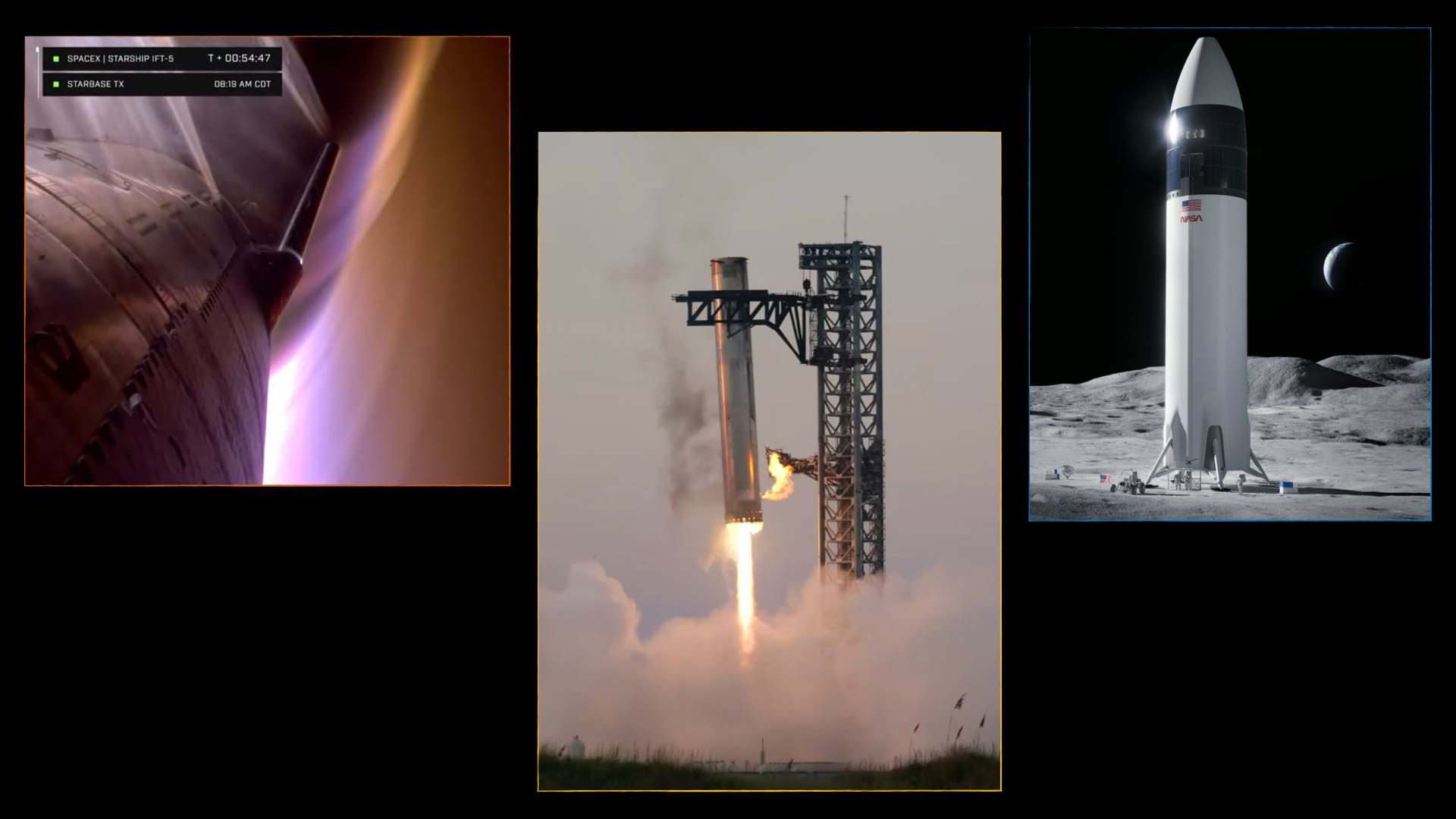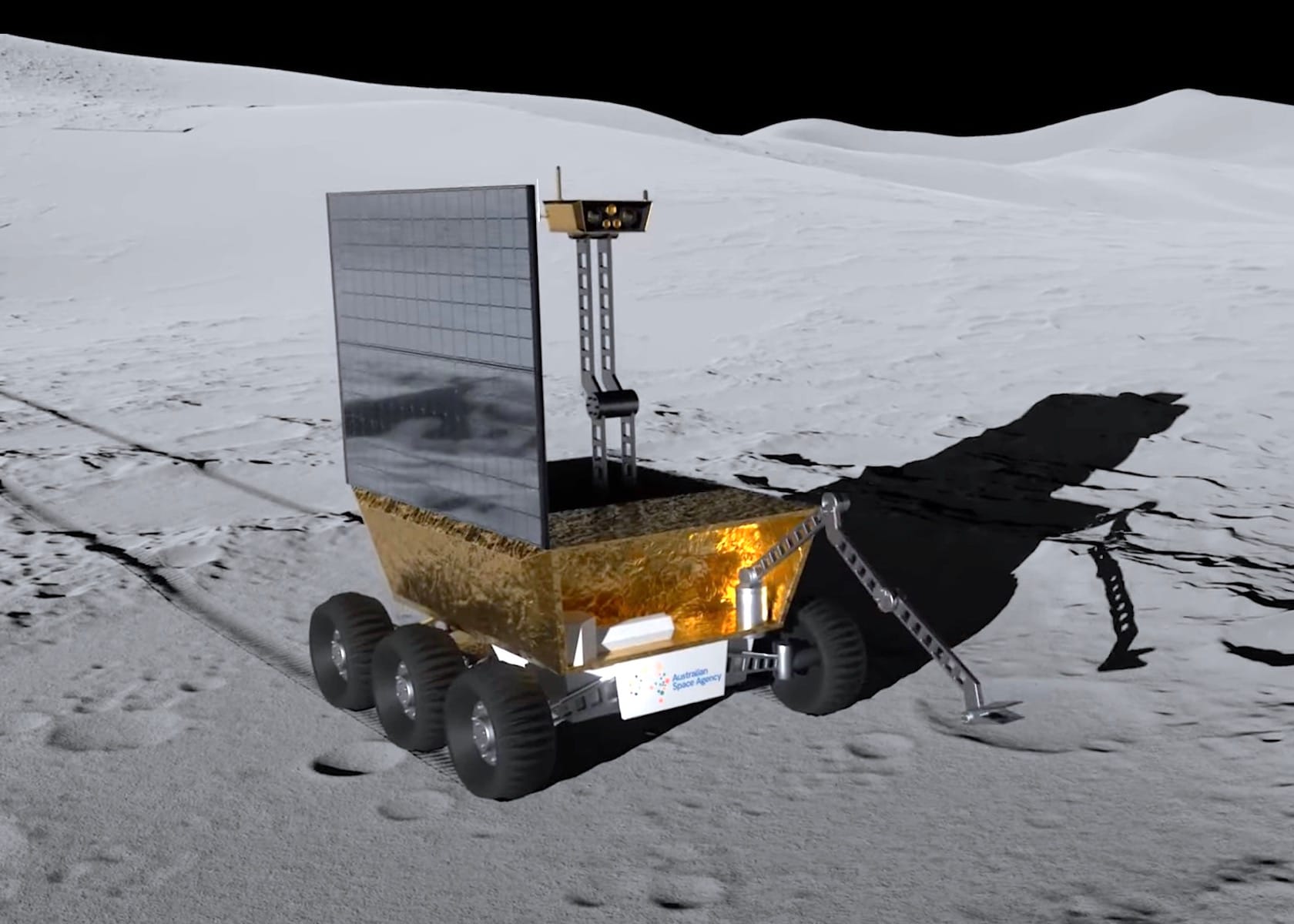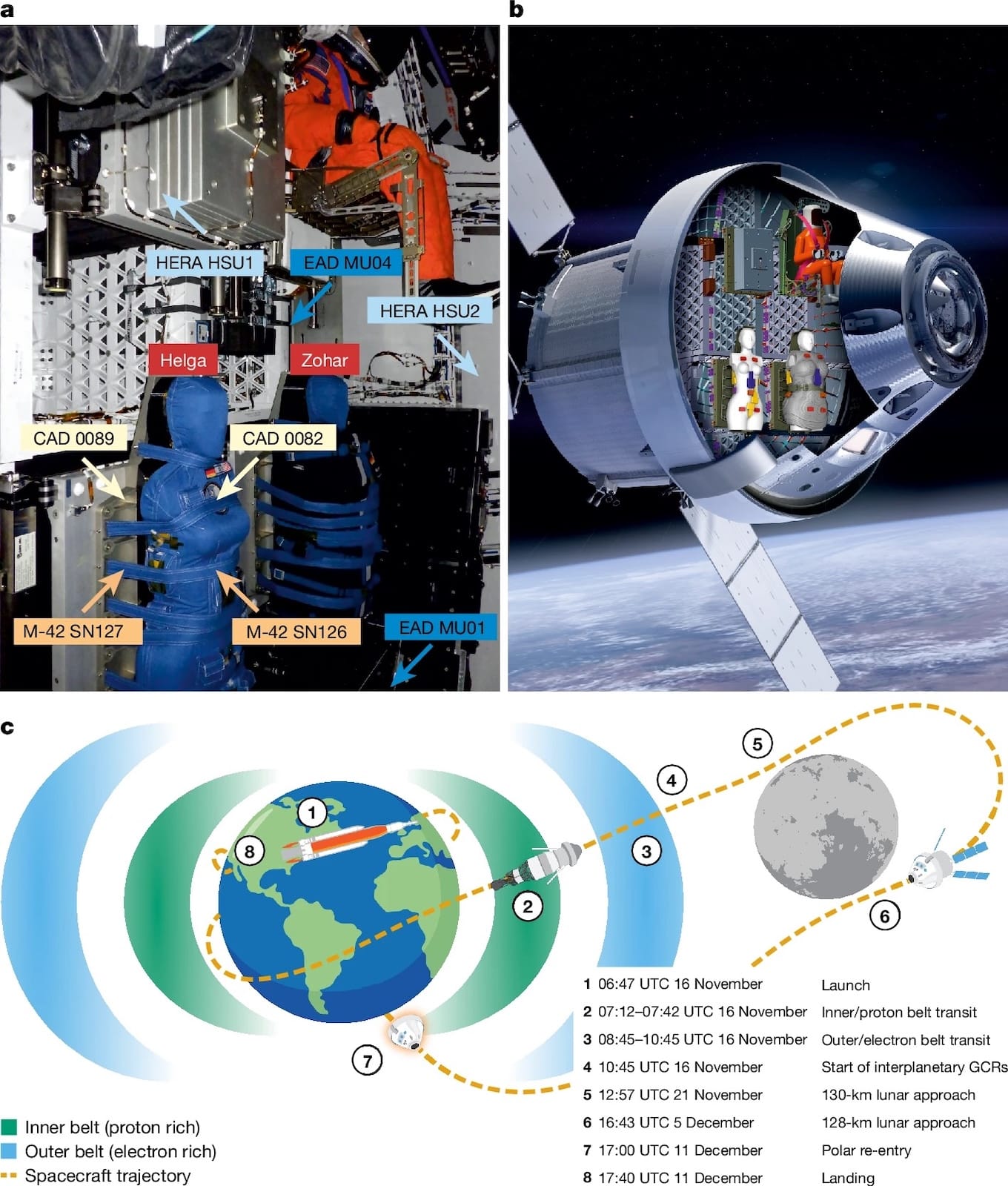Moon Monday #197: Starship Artemis, and lunar mission updates
NASA’s road to the Moon inches through Starship

SpaceX’s fifth launch of its fully integrated Starship Super Heavy rocket on October 13 was a resounding success, with both the Super Heavy booster and the Starship second stage completing their flight as well as soft return objectives. With this mission, SpaceX has demonstrated returning the Starship Booster straight to the launchpad and performed a precise soft splashdown of the Starship upper stage, clearing another milestone in the long path for the US to put humans on the Moon again with Artemis for which NASA has selected Starship’s lunar variant.
Much like the biggest of Starship ambitions, the Lunar Starship needs a high launch cadence for adequate in-orbit refueling. A key element of that is how well SpaceX can get the heat shield to perform on the upper stage. And with this flight, the company’s engineers seem to have resolved most such issues faced on the previous flight. Next up, we need to see over a year or two how fast SpaceX refurbishes Starships, operationalizes more launchpads, and delivers payloads to Earth orbit. These ships will also need to dock with one other and exchange cryogenic fuel so as to then sufficiently fill up a Lunar Starship to go to the Moon and come back. Lori Glaze, who heads aspects of Artemis efforts at NASA, said:
There’s no doubt that the Human Landing System is [on the] critical path for Artemis III. The pacing item is the rate at which SpaceX can launch the systems that can fuel the depot, so that it's prepared to fuel Starship for a lunar landing. So the real key there is them being able to get to a rate where they can launch at a rapid enough cadence.
In July, Jeff Foust reported that an internal confirmation review conducted by NASA on the readiness of SpaceX’s Lunar Starship gave the agency’s Artemis III crewed Moon landing mission a 70% chance of launch by February 2028, nearly a year and a half later than the current public date of September 2026.
The larger perspective to consider is the huge deal that is Artemis IV—for the crewed landing of which NASA chose an upgraded Lunar Starship as a critical mission element. If successful, in just one mission after Artemis III’s crewed landing demonstration, NASA will have upgraded its entire lunar transportation stack: from improving payload capacity to lunar orbit by 10,000 kilograms with the SLS rocket’s Block 1B variant to sending the first astronauts to the US-led Gateway orbital habitat to having an upgraded crewed lander (as Starship) capable of enabling month-long surface missions instead of Artemis III’s 6.5-day stay.
Artemis IV’s architecture, to be reinforced with Artemis V via Blue Origin’s Blue Moon lander instead of Starship, is the template NASA hopes to keep using in future missions leading to an Artemis Moonbase. It’s thus far more important to get all Artemis IV and V elements right—including Starship—than to worry about crewed Moon landings being delayed some more or slighting crewed lunar efforts from the other side of Earth. We have waited decades for a return to our Moon, and just as long for a fully reusable space launch system. We can wait a few years more.
Australian lunar roo-ver delayed

When NASA recently contracted Intuitive Machines to send the agency’s science & technology payloads on the latter’s Moon lander with a 2027 launch target, I suspected that Australia’s first lunar rover, called Roo-ver, seemed missing from the manifest based on prior information which could point to delays. It turns out that the suspicion was correct. In an interview with Chethan Kumar, Australian Space Agency Chief Enrico Palermo said that the one of the two national industry consortiums competing to build Roo-ver—AROSE and the EPE & Lunar Outpost Oceania—will be selected later this year, and that the rover will launch “later this decade”. The agency had previously announced the winning consortium’s selection to be around June 2024 and the mission launch to be by 2026.
Heading to the Moon’s south pole aboard an as-yet-unspecified NASA-funded CLPS lander, the semi autonomous 20-kilogram Roo-ver will fetch lunar soil for the lander, where a NASA-operated system will practice extracting oxygen from it as a technology precursor to eventually sustaining human presence on the Moon. In a related update on Roo-ver’s development, landing site studies have been ongoing, with two preliminary locations at 85°S and 89°S being deemed suitable.
Many thanks to Astrolab, David Draper, Parvathy Prem and planetary scientist David Blewett for sponsoring this week’s Moon Monday! If you too appreciate my efforts to bring you this curated community resource, kindly join them and support my independent writing.
More Artemis updates

- NASA, ESA, and DLR scientists evaluating data from the many radiation experiments onboard the NASA Artemis I Orion spacecraft’s circumlunar flight find that radiation exposure to future astronauts will vary not only based on time spent at locations within the capsule but also on Orion’s orientation in space. For example, the paper says, when Orion’s orientation was altered during an engine burn, exposure levels dropped nearly in half due to the highly directional nature of the radiation in the Van Allen belt. These results will support understanding and preparedness for radiation exposure the crew of Artemis II will face during their lunar flyby mission mid-decade.
- NASA, ESA, and Nikon continue collaborating on an ergonomic handheld camera for Artemis III astronauts to capture good low light images in the dark environment of the Moon’s south pole. Called the Handheld Universal Lunar Camera (HULC), its prototypes are being tested and refined in ESA’s Pangaea campaign, which trains future lunar astronauts in geology and sample collection. The camera was also tested in NASA’s analog JETT 3 mission in Arizona. In a recent Pangaea excursion, astronauts used the camera with a telephoto lens because new research based on the Apollo missions shows that astronauts’ perception of distances and slopes gets altered on the Moon’s surface. A telephoto lens would thus better guide Moonwalks. The radiation-hardened and thermally protected HULC camera will be tested on the International Space Station before using it on Artemis missions.
- NASA has awarded an unspecified mission extension to the Advanced Space-led CAPSTONE lunar orbiter, which recently completed its primary mission spanning 18 months in lunar orbit. As a literal pathfinding mission for the upcoming NASA-led international Gateway orbital habitat, CAPSTONE has been test-flying the fuel-efficient Near-Rectilinear Halo Orbit (NRHO) the lunar station will be in. Results from it are helping NASA refine the orbit’s mathematical models based on the exact propellant and resources CAPSTONE consumed to maintain desired operations. As part of the mission extension, CAPSTONE will demonstrate some more autonomous operations, and continue to cross-communicate with NASA’s Lunar Reconnaissance Orbiter (LRO) to work towards demonstrating autonomous position determination and navigation in lunar orbit, that is, without relying on or chocking up Earthly ground stations. It’s worth noting that the CAPSTONE team practically fully recovered a failing spacecraft and managed to have it enter and operate in NRHO despite a faulty valve in one of its eight thrusters—which is still stuck!
More Moon
- On October 4, the Dominican Republic became the 44th country to sign the US-led Artemis Accords for cooperative lunar exploration. Estonia signed the Accords too on October 13, making it the 20th European nation and 45th country to do so.
- Open Lunar Foundation is hiring an experienced Director of Operations to manage day-to-day execution of the non-profit’s many programs aimed at cooperative and sustainable lunar exploration globally. Open Lunar is also accepting applications for a remote Fellowship position.
